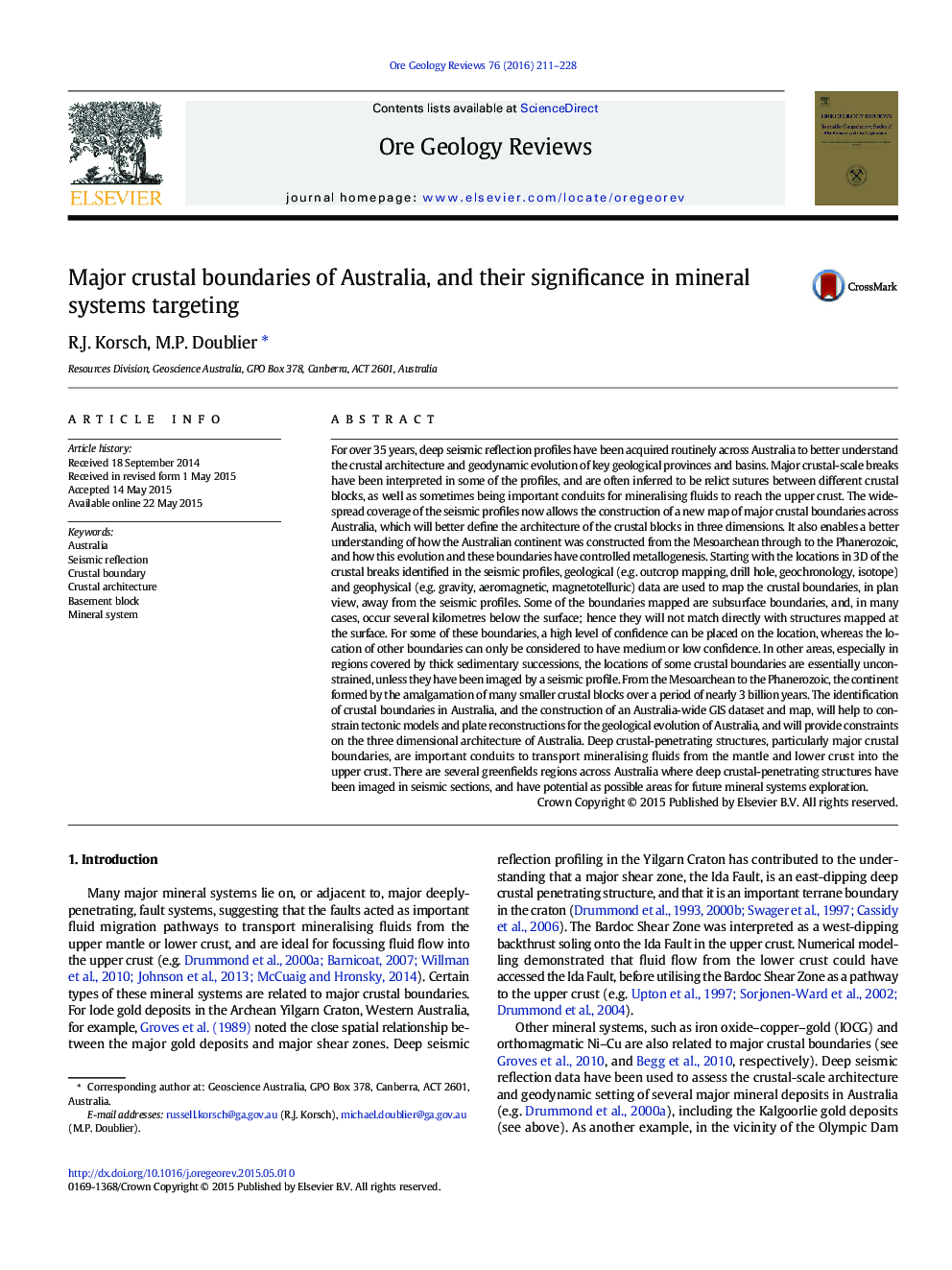| کد مقاله | کد نشریه | سال انتشار | مقاله انگلیسی | نسخه تمام متن |
|---|---|---|---|---|
| 4697073 | 1637230 | 2016 | 18 صفحه PDF | دانلود رایگان |
• Deep seismic reflection traverses map deep crustal penetrating structures.
• New map of crustal boundaries developed for Australia
• Map provides constraints on the three dimensional architecture of Australia.
• Potential for map to guide future mineral exploration
For over 35 years, deep seismic reflection profiles have been acquired routinely across Australia to better understand the crustal architecture and geodynamic evolution of key geological provinces and basins. Major crustal-scale breaks have been interpreted in some of the profiles, and are often inferred to be relict sutures between different crustal blocks, as well as sometimes being important conduits for mineralising fluids to reach the upper crust. The widespread coverage of the seismic profiles now allows the construction of a new map of major crustal boundaries across Australia, which will better define the architecture of the crustal blocks in three dimensions. It also enables a better understanding of how the Australian continent was constructed from the Mesoarchean through to the Phanerozoic, and how this evolution and these boundaries have controlled metallogenesis. Starting with the locations in 3D of the crustal breaks identified in the seismic profiles, geological (e.g. outcrop mapping, drill hole, geochronology, isotope) and geophysical (e.g. gravity, aeromagnetic, magnetotelluric) data are used to map the crustal boundaries, in plan view, away from the seismic profiles. Some of the boundaries mapped are subsurface boundaries, and, in many cases, occur several kilometres below the surface; hence they will not match directly with structures mapped at the surface. For some of these boundaries, a high level of confidence can be placed on the location, whereas the location of other boundaries can only be considered to have medium or low confidence. In other areas, especially in regions covered by thick sedimentary successions, the locations of some crustal boundaries are essentially unconstrained, unless they have been imaged by a seismic profile. From the Mesoarchean to the Phanerozoic, the continent formed by the amalgamation of many smaller crustal blocks over a period of nearly 3 billion years. The identification of crustal boundaries in Australia, and the construction of an Australia-wide GIS dataset and map, will help to constrain tectonic models and plate reconstructions for the geological evolution of Australia, and will provide constraints on the three dimensional architecture of Australia. Deep crustal-penetrating structures, particularly major crustal boundaries, are important conduits to transport mineralising fluids from the mantle and lower crust into the upper crust. There are several greenfields regions across Australia where deep crustal-penetrating structures have been imaged in seismic sections, and have potential as possible areas for future mineral systems exploration.
Figure optionsDownload as PowerPoint slide
Journal: Ore Geology Reviews - Volume 76, July 2016, Pages 211–228
